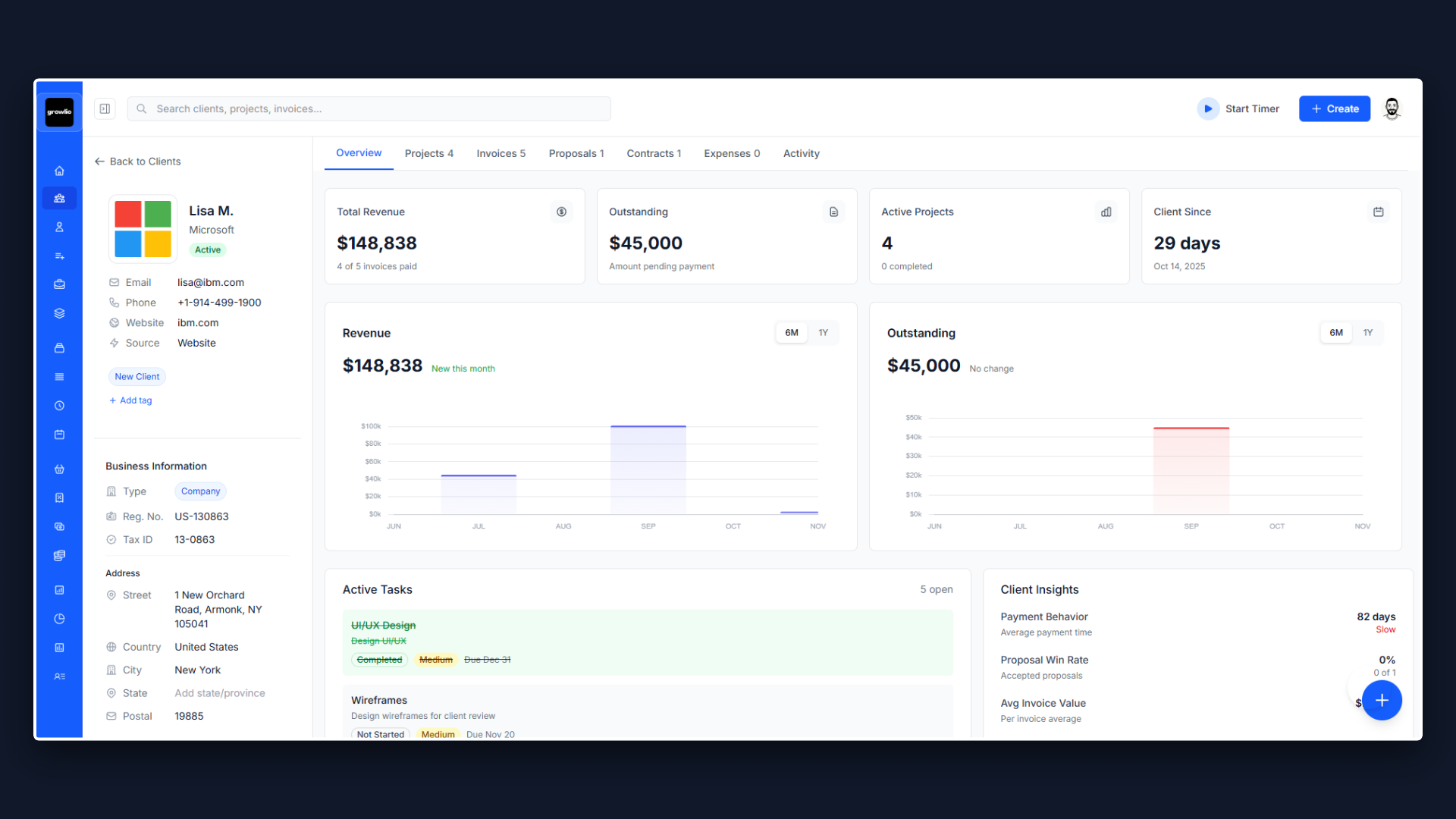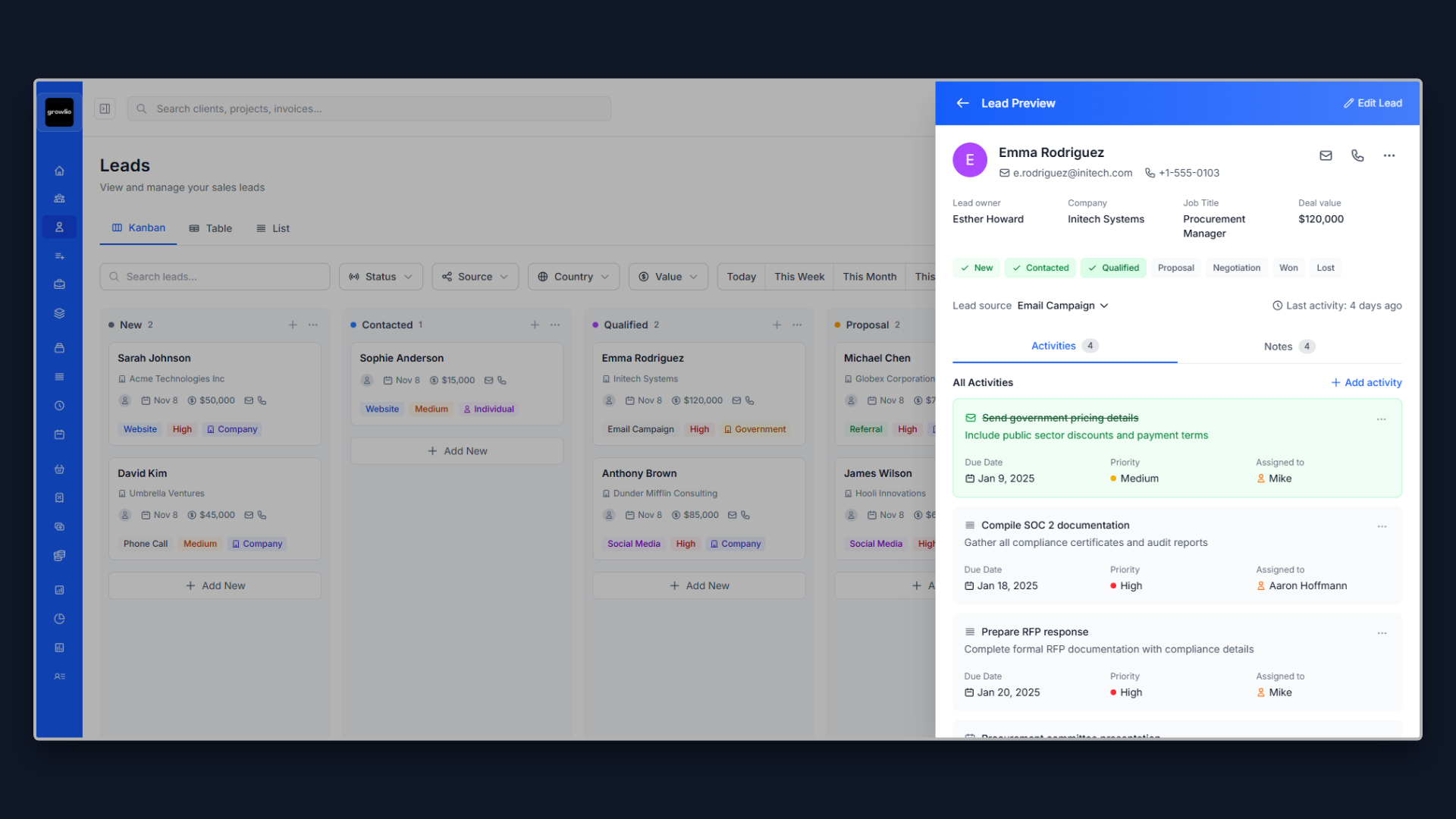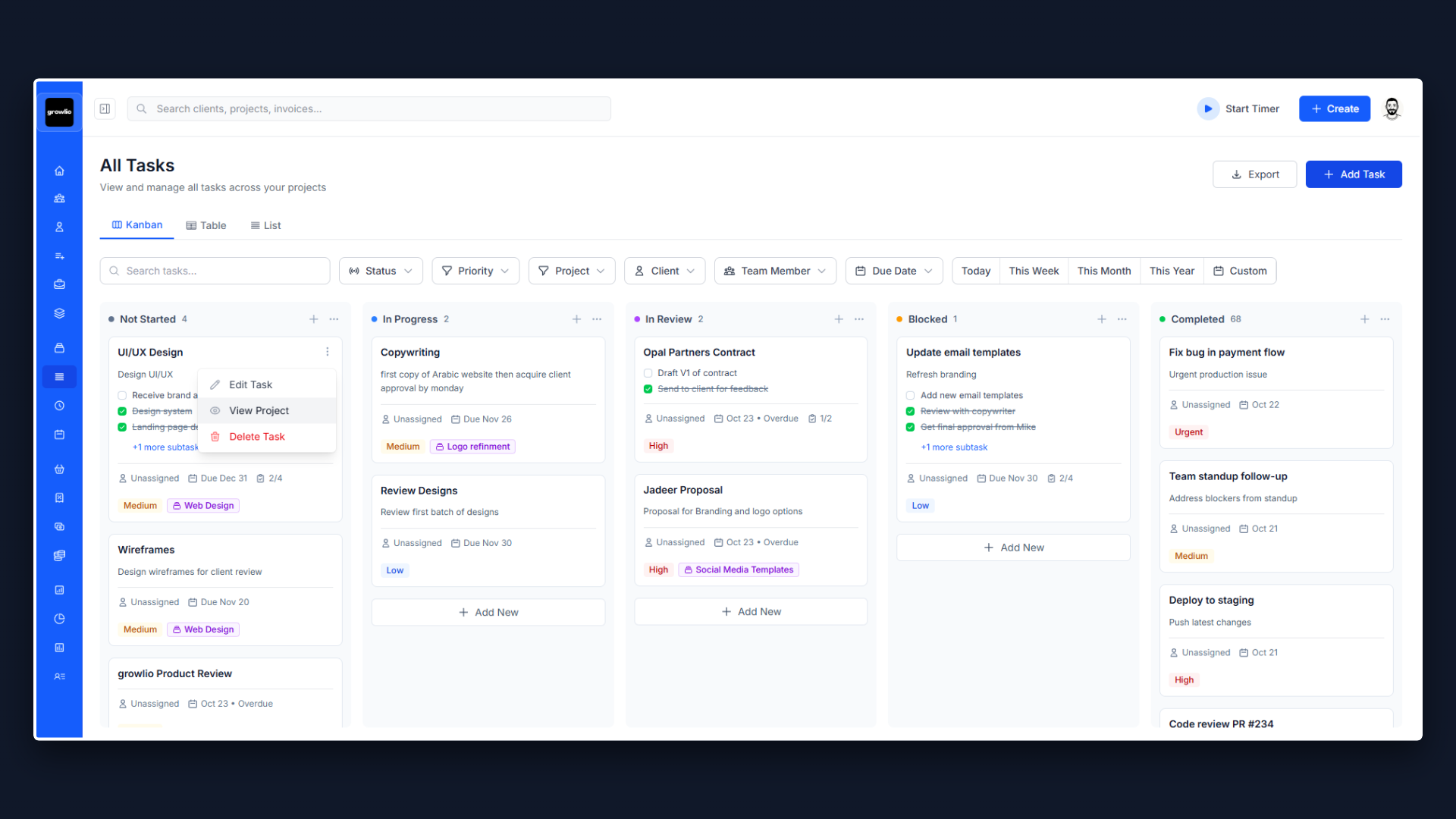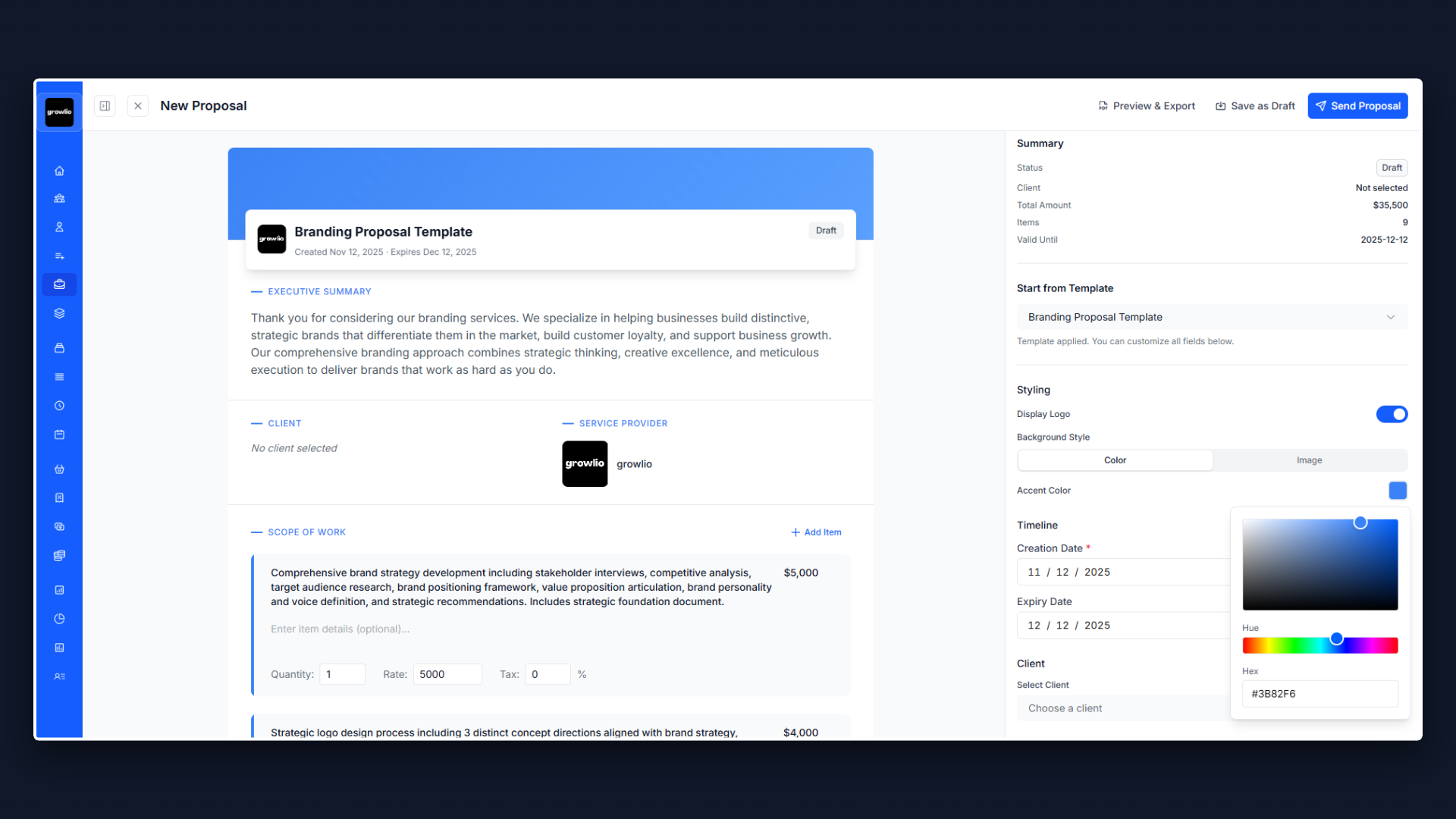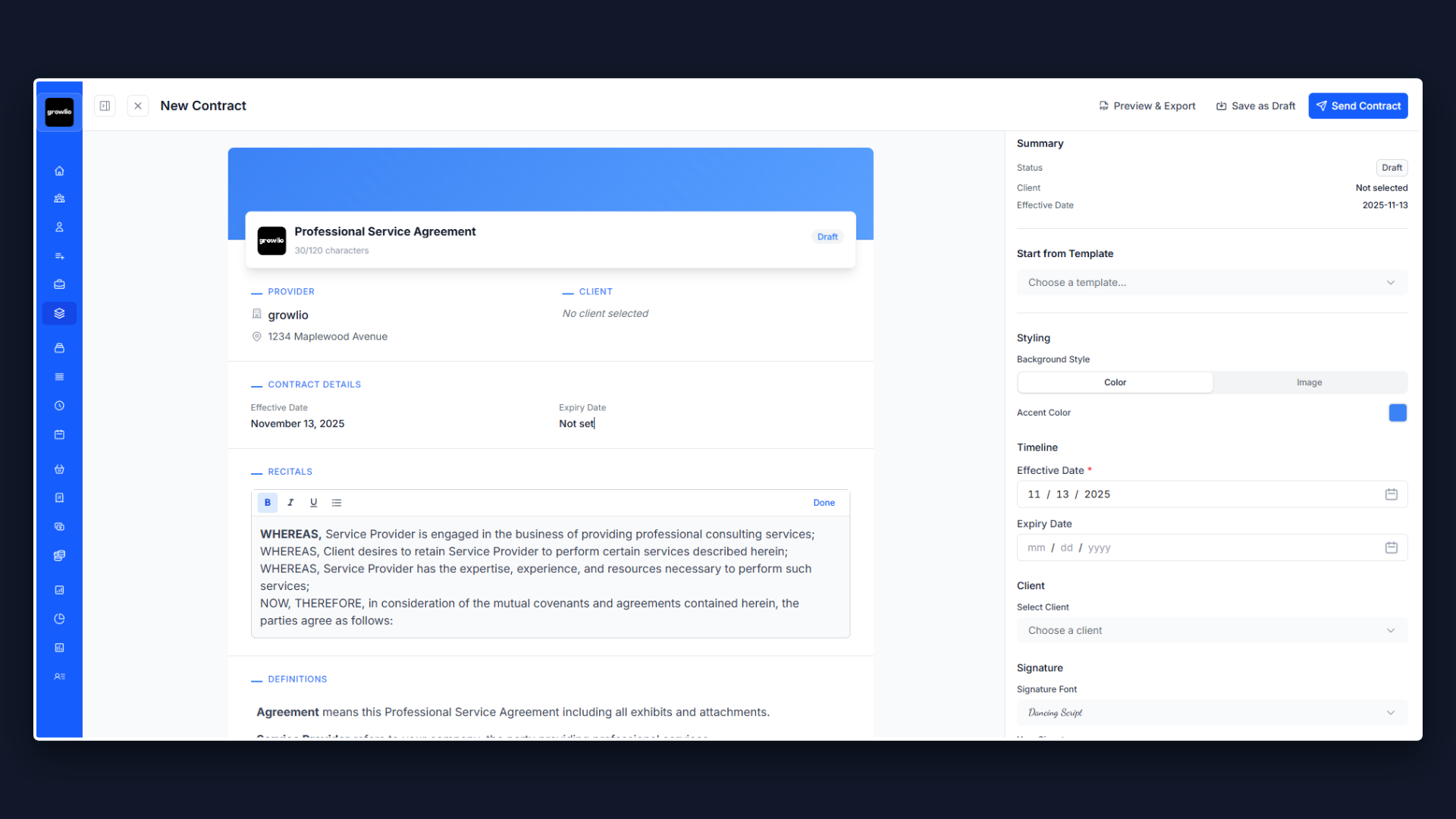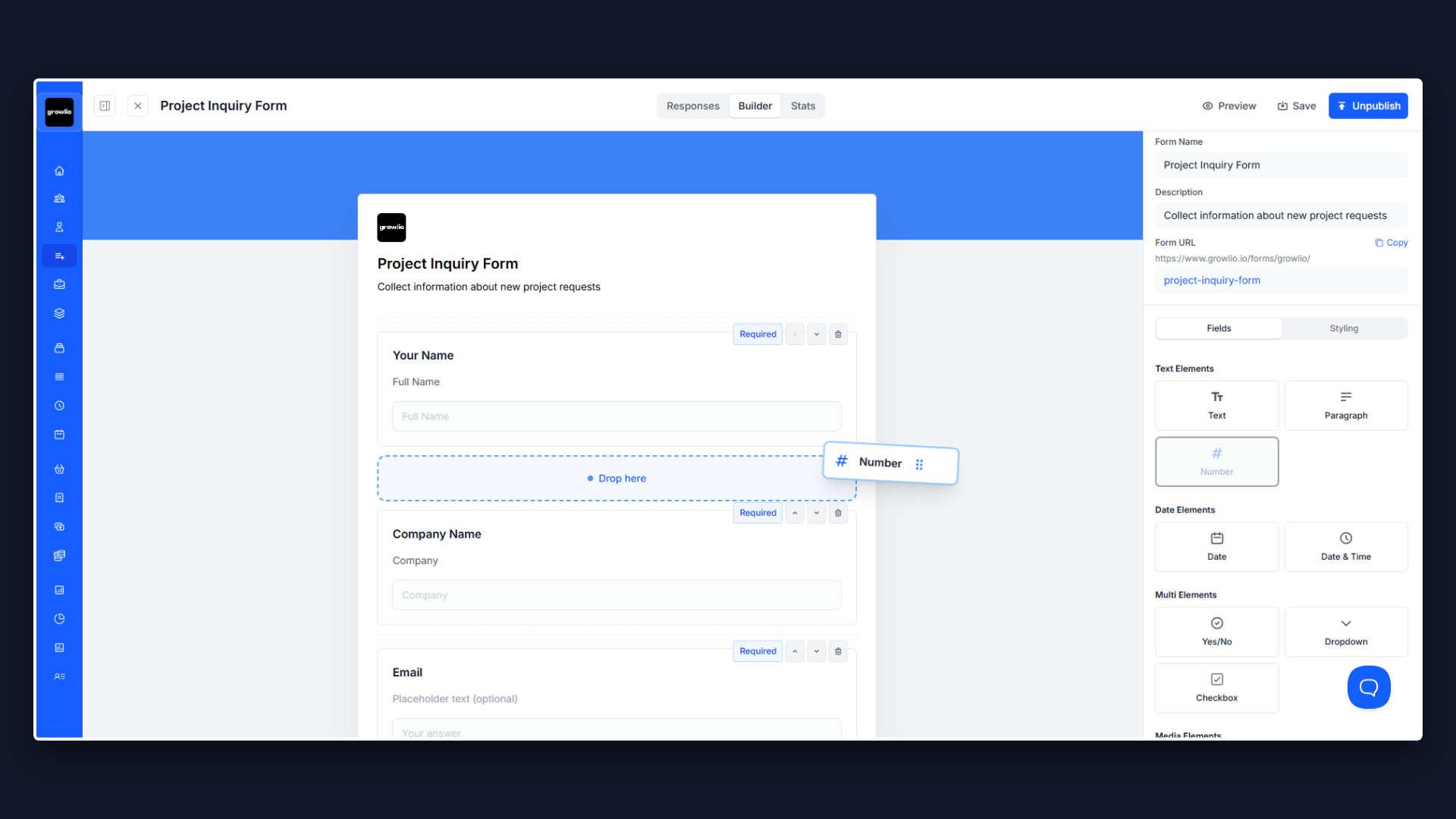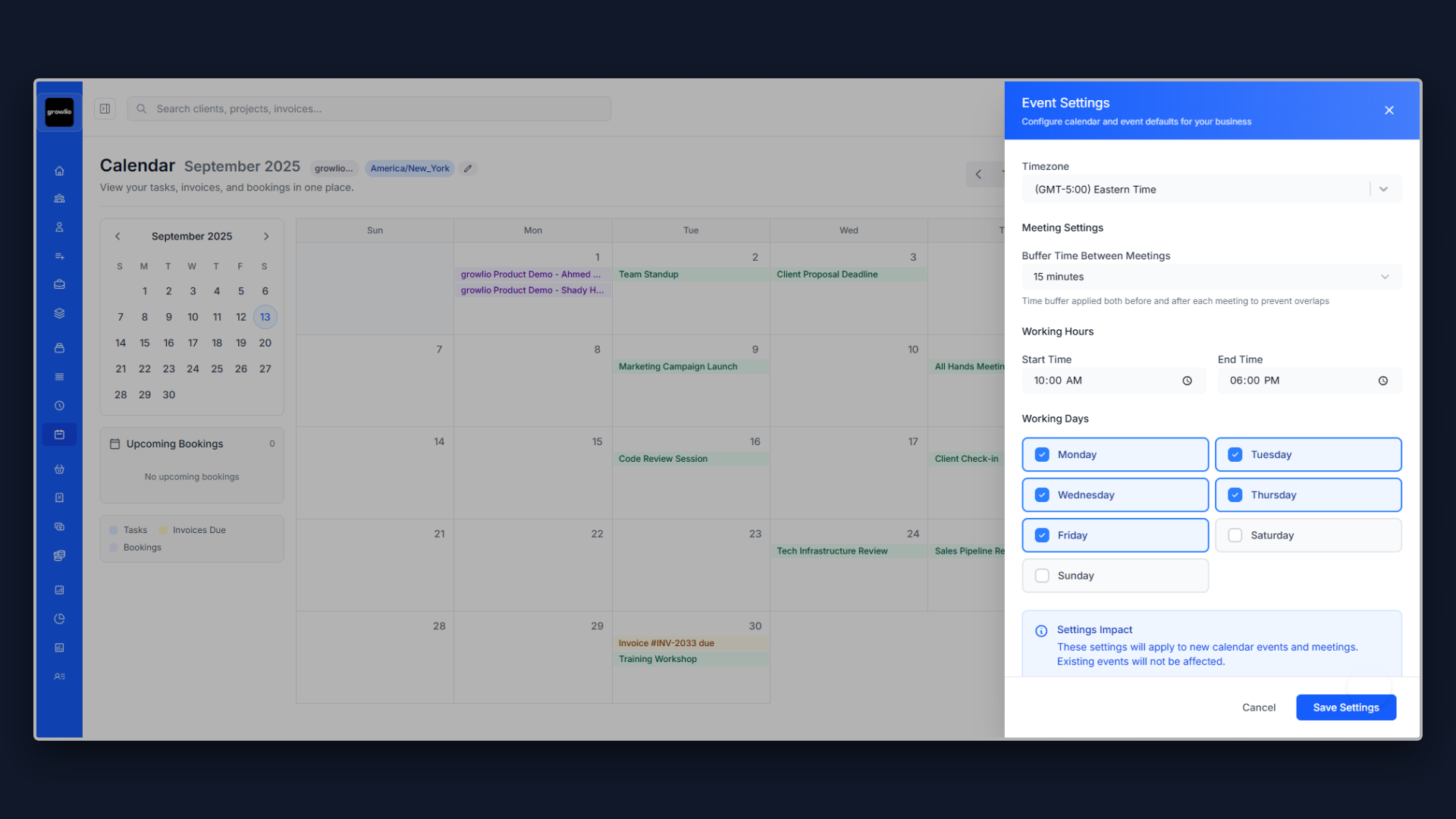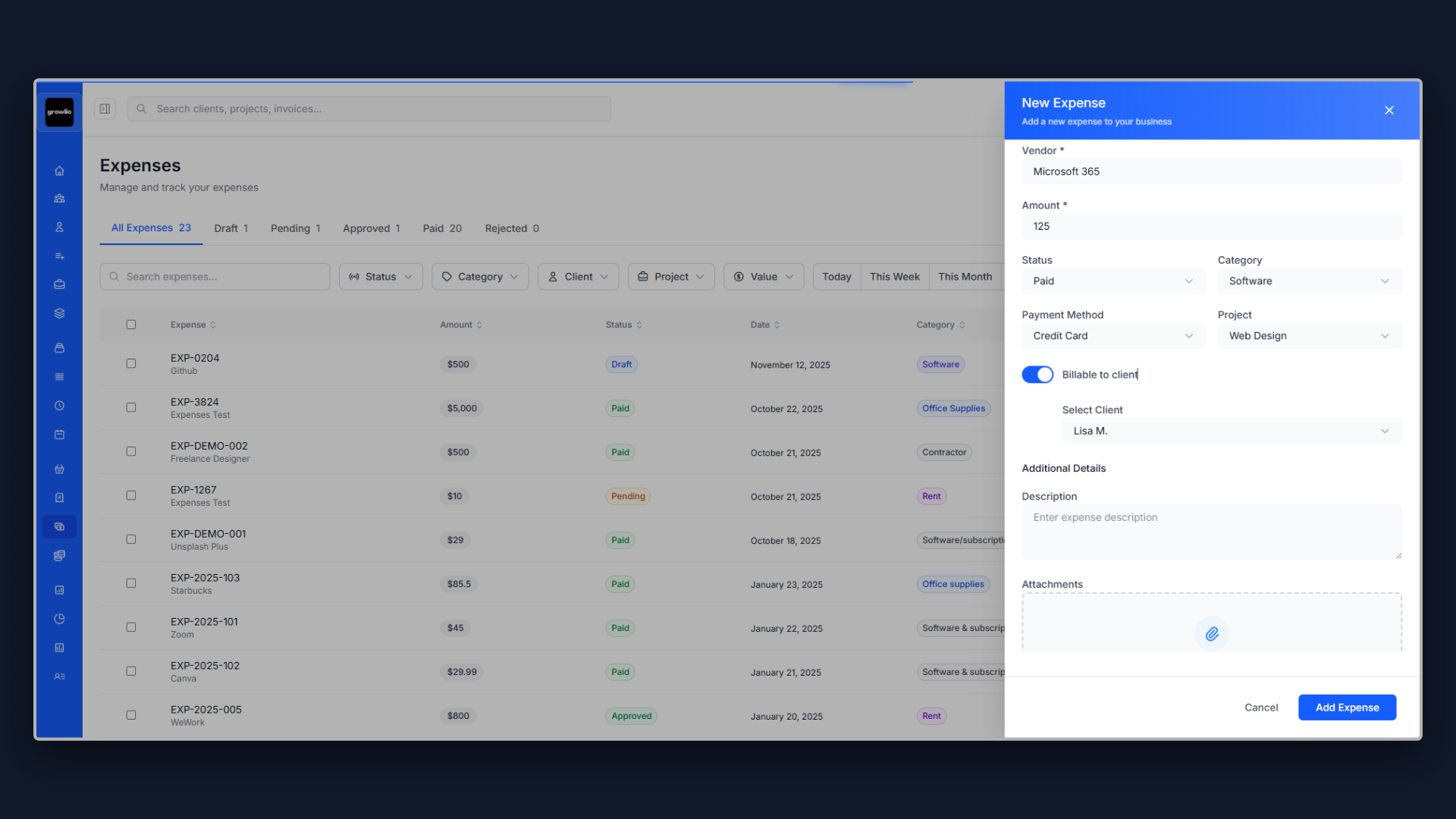Why Your Logo Design Proposal Makes or Breaks Your Business
As a logo designer or graphic design professional, you know that a strong logo can increase brand recognition by 80% and that consumers make purchasing decisions within 90 seconds based largely on visual appearance. But here is the harsh reality: even if you are exceptional at creating memorable, distinctive logos, you will struggle to win clients if your proposals do not demonstrate your value clearly.
The logo design market is highly competitive, with businesses spending billions annually on logo creation and redesign. Yet many talented logo designers lose projects to competitors who simply write better proposals. This has nothing to do with your design skills and everything to do with how you present them.
Your logo design proposal is your first impression, your sales pitch, and your contract all rolled into one document. It needs to educate prospects who may not understand what makes a logo effective while simultaneously proving you are the expert they need. This is a delicate balance that many get wrong.
1. Start With the Client's Current Logo Problems, Not Your Services
The biggest mistake logo designers make is leading with a list of services: "We offer custom logo design, multiple concepts, unlimited revisions..." Your prospect does not care about your services yet. They care about their problems.
Start your proposal by demonstrating you understand their specific logo situation. Is their current logo outdated and amateurish? Does it fail to differentiate them from competitors? Is it not working across different applications? Does it fail to communicate their brand positioning? Do they have no logo at all and are losing credibility? Address these pain points explicitly.
For example: "Our analysis shows your current logo was created in 2012 and reflects design trends from that era that now appear dated. The intricate details do not scale well to small sizes like social media avatars or mobile apps. Meanwhile, your competitors have modernized their logos to feel current and professional. Your logo is often the first touchpoint potential customers have with your brand—research shows you have just 10 seconds to make a positive first impression. A strategic logo redesign that is modern, versatile, and memorable could increase brand recognition by 30-50% and position you as a market leader rather than a follower."
This approach immediately shows you have done your homework and understand what is at stake. Now they are ready to hear your solution.
2. Include a Logo Critique to Demonstrate Your Expertise
Nothing builds credibility faster than showing you have already analyzed their logo or competitive landscape. Include a brief critique section in your proposal highlighting 3-5 critical issues:
Design Quality Issues: Current logo appears amateurish or dated (created in outdated design style), poor typography choices (hard to read or inappropriate for industry), color palette that is not distinctive or appropriate, lacks visual balance and proportion, looks like clip art or template design rather than custom professional work.
Versatility Problems: Logo does not scale well to small sizes (loses detail on mobile or social media), does not work in monochrome or single color applications, too complex for embroidery, signage, or merchandise, no icon or simplified version for app icons or favicons, difficult to reproduce across different media.
Strategic Misalignment: Logo does not communicate your brand positioning or values, looks like competitors (not distinctive in your market), appeals to wrong demographic or psychographic, feels outdated compared to modern industry standards, does not reflect your premium or budget positioning.
Technical Deficiencies: Only have low-resolution JPG or PNG files (no vector source files), inconsistent logo variations used across materials, no clear usage guidelines or specifications, missing file formats needed for various applications, poor file naming and organization.
This mini critique serves multiple purposes: it proves you know what you are doing, it creates urgency by highlighting problems, and it makes your proposed solution feel essential rather than optional.
3. Break Down Your Logo Design Process Into Clear Phases
Logo design has a specific methodology, but your proposal should not be confusing. Break your process into clear, logical phases that clients can understand.
Phase 1: Discovery & Research (Day 1-3)
Client questionnaire about business, audience, and preferences, competitive logo analysis in your industry, target audience research and psychology, brand personality exploration, design direction and mood board creation, strategic foundation before design begins.
Phase 2: Concept Development (Day 4-7)
Initial logo concept sketches and exploration, development of 3 distinct logo concepts in different directions, each concept aligned with your strategic positioning, presentation-ready mockups showing logos in context, written rationale explaining the thinking behind each concept.
Phase 3: Refinement (Day 8-12)
Client selects preferred concept direction, 2-3 revision rounds to perfect the chosen design, refinement of typography, colors, and proportions, testing logo across various applications and sizes, development of logo variations (primary, secondary, icon).
Phase 4: Finalization & Delivery (Day 13-14)
Final logo perfection and approval, preparation of all file formats (vector and raster), color specifications (CMYK, RGB, HEX, Pantone), basic usage guidelines document, organized file delivery with clear naming.
This phased approach makes logo design feel manageable and shows you have a clear roadmap. It sets expectations for timeline and involvement.
4. Set Realistic Expectations About Timeline and Revisions
One of the fastest ways to lose trust is overpromising results. Clients appreciate honesty about logo design timelines and revision processes.
Be explicit: "Professional logo design is a strategic process that requires research, creative exploration, and refinement. A custom logo typically takes 2-3 weeks from kickoff to final delivery, depending on revision rounds and feedback timing. Rush projects are possible but may compromise the strategic thinking that delivers a truly effective logo."
Provide a realistic projection: "Based on our typical logo design process, you can expect: Days 1-3: Discovery, research, and creative direction established. Days 4-7: Three distinct logo concepts presented for your review. Days 8-12: Your selected concept refined through 2-3 revision rounds. Days 13-14: Final files prepared and delivered in all necessary formats. Total timeline: 2-3 weeks depending on your feedback turnaround time."
Address revisions clearly: "Our packages include 2-3 rounds of revisions on your selected concept. Revisions mean refining the chosen design (adjusting colors, typography, proportions). They do not mean creating entirely new concepts—that is additional scope. This revision structure ensures focused refinement rather than endless exploration that delays your project."
These clear parameters prevent scope creep and set boundaries while showing professionalism.
5. Explain Your Logo Design Philosophy and Approach
Many clients do not understand what makes a logo effective. Use your proposal to educate them on your design philosophy.
Explain that effective logos are: simple and uncluttered (memorable logos are often the simplest—think Apple, Nike, Target), versatile across all applications (working at 1 inch and 100 feet), timeless rather than trendy (avoiding design fads that date quickly), appropriate for the industry and audience (a law firm needs different aesthetic than a toy store), memorable and distinctive (standing out from competitors), and strategic rather than decorative (communicating brand positioning and values).
Outline your design principles: "We create logos guided by proven design principles: visual balance and proportion, effective use of negative space, strategic color psychology, typography that is legible and appropriate, scalability from tiny to massive sizes, reproduction in any color or grayscale, and cultural sensitivity and appropriateness."
Give specific examples: "A strong logo like FedEx appears simple but contains a hidden arrow in the negative space between E and X, subtly reinforcing speed and precision. Amazon has an arrow from A to Z suggesting they sell everything. These thoughtful details make logos work at both conscious and subconscious levels. That is the level of strategic thinking we bring to your logo."
This demonstrates you are a strategic designer, not just someone making things look pretty.
6. Address Logo Concepts and Creative Direction
Clients often wonder how many concepts they will see. Educate them on your concept approach.
Explain your concept strategy: "We present 3 distinct logo concepts exploring different creative directions. This is the optimal number because: it gives you meaningful choice without overwhelming, each concept explores a unique strategic approach, we invest quality time in each direction rather than quantity, and it allows us to refine your chosen direction to perfection."
Describe concept diversity: "The 3 concepts will explore different approaches: Concept 1 might be modern and minimal (geometric, clean, contemporary), Concept 2 might be classic and professional (traditional, established, credible), Concept 3 might be bold and distinctive (unique, memorable, standout). This diversity ensures we explore the strategic landscape while respecting your preferences."
Set expectations about concepts: "Each concept is fully developed—not rough sketches but presentation-ready designs you can envision on your website, business cards, and signage. We present them in context with mockups and explain the strategic thinking behind each option."
Address the limitation: "We do not present 10 or 20 concepts. More concepts does not equal better results—it often signals lack of strategic focus. Three well-considered concepts deliver better outcomes than dozens of random options."
7. Explain Your Typography and Color Approach
Typography and color are critical logo elements. Show prospects you have expertise in these areas.
Explain typography strategy: "Typography in logos is critical—it often comprises 50% or more of the design. We carefully select or create custom typography that is: legible at all sizes, appropriate for your industry and positioning, distinctive but not gimmicky, timeless rather than trendy, and properly spaced and proportioned. We often customize letterforms to create unique characters that cannot be replicated."
Outline color strategy: "Color psychology influences brand perception. We select logo colors strategically: blue conveys trust and professionalism (banks, tech companies), red suggests energy and excitement (food, entertainment), green represents growth and sustainability (health, environment), black communicates luxury and sophistication (high-end brands). We provide color specifications for all media: CMYK for print, RGB for screens, HEX for web, Pantone for brand consistency."
Address versatility: "Your logo must work in full color, single color, and grayscale. We design with this versatility in mind, ensuring your logo is effective whether printed in full color on a brochure or embroidered in one color on a polo shirt. Many designers forget this critical requirement."
8. Explain File Formats and Deliverables
Clients often do not understand file formats. Educate them on what they will receive and why it matters.
Explain vector vs. raster: "Vector files (AI, EPS, SVG, PDF) are the source files that can scale infinitely without quality loss. These are essential for professional use—printers and sign companies require vector files. Raster files (PNG, JPG) are pixel-based images for specific sizes, used for websites and digital applications."
Outline complete deliverables: "You will receive comprehensive files including: Vector source files (AI, EPS, PDF, SVG for all uses and future editing), High-resolution PNG files (transparent backgrounds in multiple sizes: 5000px, 2000px, 1000px, 500px), JPG files (white backgrounds for general use), Favicon files (for website browser tabs), Logo variations (primary logo, secondary/horizontal version, icon/symbol only, monochrome versions), Color specifications (CMYK, RGB, HEX, Pantone codes), and Basic usage guidelines (minimum sizes, clearspace, color usage)."
Address file organization: "All files will be organized in clearly labeled folders by format and use case. File naming will be clear and professional. You will never wonder which file to use for which purpose—we provide clear documentation."
Emphasize ownership: "You will own all rights to your logo design. You can use it however you want, wherever you want, for as long as you want. No licensing fees, no restrictions. Complete ownership transfers to you upon final payment."
9. Address Logo Trademark and Uniqueness
Logo originality and trademark concerns matter to clients. Address these proactively.
Explain originality commitment: "Every logo we create is 100% original, custom-designed for you. We never use stock graphics, templates, or clip art. We never repurpose designs from other clients. Your logo is unique to your business. We conduct visual searches during research to ensure your logo is distinctive from competitors and existing trademarks in your industry."
Discuss trademark considerations: "While we design logos to be original and distinctive, we are designers, not trademark attorneys. We recommend conducting a comprehensive trademark search through an attorney before heavily investing in rollout if trademark protection is important to your business. We can design your logo to be trademarkable (distinctive, non-generic, not descriptive), but legal clearance requires professional trademark counsel."
Address copyright: "Upon final payment, all copyright and ownership of your logo design transfers to you completely. You will receive a simple copyright transfer agreement confirming your ownership. We retain the right to display the work in our portfolio, but you own the design outright."
This transparency builds trust and prevents misunderstandings about ownership and originality.
10. Include Portfolio Examples and Case Studies
Nothing sells like visual proof. Include 4-6 strong logo examples in your proposal.
Format them simply: Client: Tech startup in project management software. Challenge: Needed modern, distinctive logo that communicates organization and efficiency. Solution: Created geometric mark combining checklist and building blocks metaphor, paired with clean modern typography. Result: Logo contributed to successful seed funding (investors commented on professional brand presentation), 40% increase in website conversions, strong brand recognition at industry events.
Show diversity: "Our portfolio demonstrates range across industries: [Logo 1]: B2B SaaS company - modern, minimal, tech-forward. [Logo 2]: Local restaurant - warm, approachable, appetite appeal. [Logo 3]: Law firm - classic, professional, trustworthy. [Logo 4]: Fitness brand - energetic, bold, motivating. This shows we adapt our design approach to your specific industry and audience rather than forcing a single style."
Include context mockups: "Include mockups showing your portfolio logos in context: on websites, business cards, signage, products. Context helps prospects envision how their logo will look in real-world applications."
If you have limited client work, include: personal branding projects or self-initiated designs, pro bono work for nonprofits or community groups, logo work from internships or previous employment, or concept work demonstrating your process and thinking.
11. Transparent Pricing That Reflects Value
Logo design pricing varies enormously. However, vague pricing makes clients nervous and attracts price shoppers.
Provide clear pricing tiers: Essential Logo Package - $1,200: Discovery questionnaire and research, 3 logo concepts in different directions, 2 revision rounds on selected concept, final logo in standard file formats (AI, EPS, PDF, PNG, JPG), basic color specifications, copyright transfer. Professional Logo Package - $2,500: Everything in Essential, plus in-depth discovery call and competitive analysis, more extensive initial exploration, 3 revision rounds on selected concept, complete logo variation suite (primary, secondary, icon, monochrome), comprehensive file package including favicon, detailed usage guidelines document, social media kit (profile images, cover images). Premium Logo Package - $4,500: Everything in Professional, plus extensive brand research and strategy, custom typography development or modification, 4 revision rounds with collaborative refinement, business card design included, branded stationery suite (letterhead, envelope templates), 30-day post-launch support for questions, priority turnaround (10 business days instead of 15).
This tiered approach gives clients options and helps them see value at each level. It also filters price shoppers from clients who value strategic design.
12. Make Next Steps Crystal Clear
Do not leave your prospect wondering what happens next. End your proposal with a clear call to action and process.
"Ready to create a logo that makes a powerful first impression and builds lasting brand recognition? Here is how we get started: Step 1: Sign the proposal and return it by [date] with 50% deposit. Step 2: We will send you a discovery questionnaire within 24 hours. Step 3: Logo concepts presented within 7-10 business days. Step 4: Final logo delivered within 14-21 business days total. Questions? Schedule a call with me at [calendar link] or reply to this email."
This removes friction and makes it easy for prospects to say yes. The clearer you make the path forward, the more likely they are to take it.
Final Thoughts on Logo Design Proposals
Your logo design proposal is not just a formality—it is a sales tool, an educational resource, and a trust-building document. The logo designers who win the most clients are not always the most talented creatives; they are the ones who best explain logo design strategy in a way that makes sense to business owners.
Take the time to customize each proposal for your prospect. Reference their current logo issues, competitive landscape, and industry standards. Show that you have done the research. Demonstrate your expertise through a logo critique and strong portfolio examples. Set realistic expectations about timeline and revisions. And make it easy to say yes.
Remember: a great logo design proposal proves you understand their business and audience, demonstrates you have a strategic design process, shows evidence you can deliver memorable and effective logos, and makes the investment feel worthwhile. Get these elements right, and you will close more deals—even if your competitors have lower prices or bigger portfolios.
